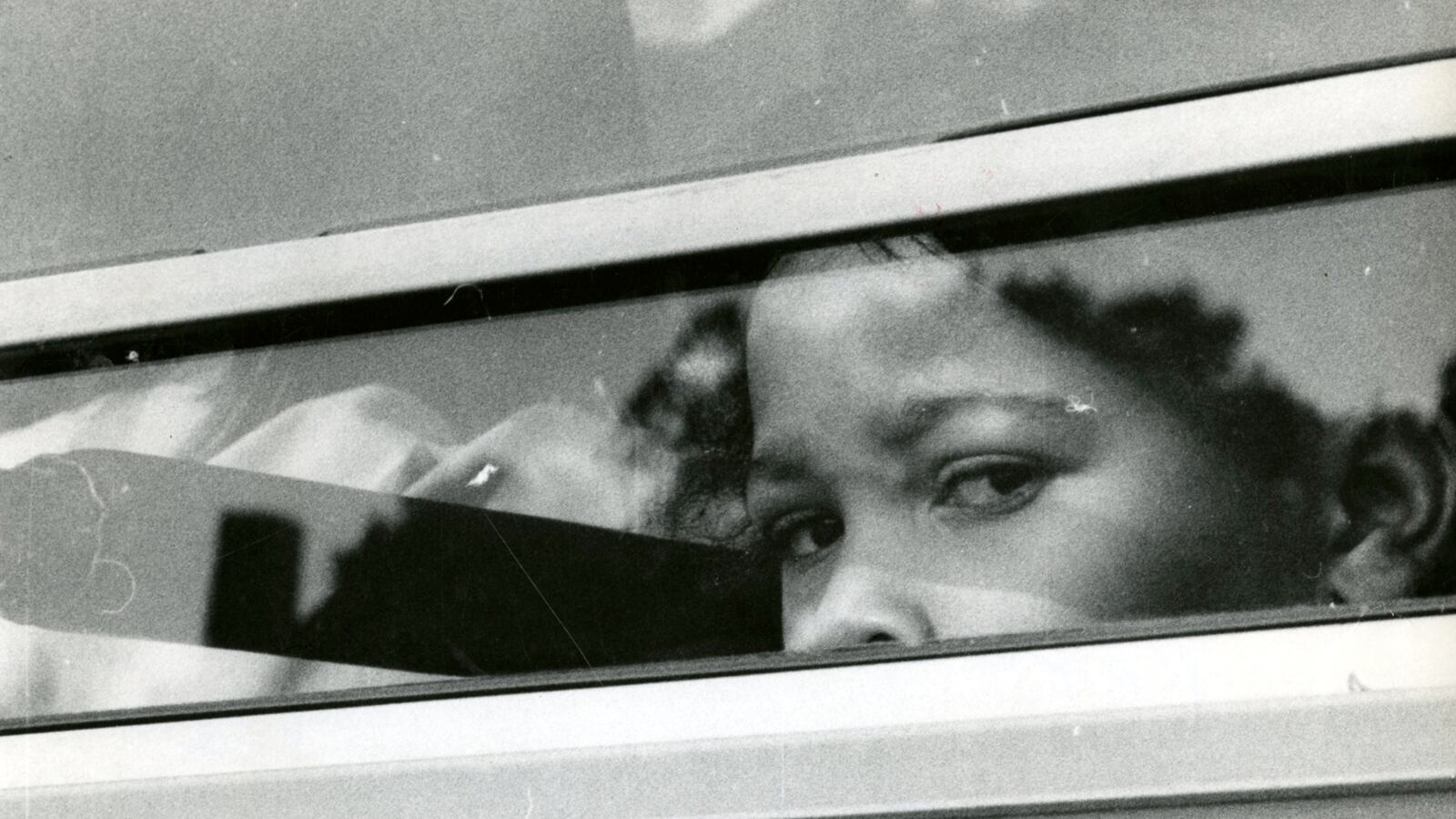
To commemorate Black History Month, and push against the all-too-common liberal triumphalism on race, Tanner Colby has taken to Slate to write on the failures of liberalism on race, and in particular, on integration. It’s a long piece, and worth the read. Here’s his mission statement, of sorts:
The left has been ceded a monopoly on caring about black people, and monopolies are dangerous. They create ossified institutions, paralyzed by groupthink and incapable of self-reflection. To the extent that liberals are willing to be self-critical, it’s generally to flagellate themselves for not being liberal enough, for failing to stand fast with the old, accepted orthodoxies. Monopolies also lead to arrogance and entitlement, and the left is nothing if not arrogant when it comes to constantly and loudly asserting its place as the One True Friend of Black America. And yet, as good as liberal policies on race sound in speeches, many of them don’t hold up in the real world.
In short, Colby is trying to show how liberals lost the war on segregation, and his first target is busing, a court-mandated program that brought black kids to white schools and white kids to black ones. As Colby notes, it was a colossal failure, and not because of Republican opposition. Instead, busing was a failure—conceptually and substantively—because of faulty liberal assumptions.
Pace the prevailing wisdom, according to Colby, blacks didn’t want entry to white spaces for their own sake—they wanted a chance to participate fully in their society. The mechanical integration of schools and institutions was a necessary part of this, but it wasn’t sufficient. This is why busing failed—it was a poor band-aid that created tension on both sides of racial divide, and resulted in a Supreme Court decision that all but codified separate-but-equal school systems.
Full integration, Colby argues, requires far more than policies like busing and affirmative action. It demands a full assault on the roots of racial inequality—segregation in housing and other discriminatory measures that created America’s racial balkanization.
Now, there’s a lot to praise in Colby’s piece, and in particular, I think he does a good job of explaining the problems with busing. But where he goes astray is in missing the broad political circumstances of the era, namely, the extent to which liberals were fighting against a wave of white opposition.
After all, contra Colby, it’s not as if they were unaware of the depth of the challenge. Here’s President Lyndon Johnson, in a commencement address to the Howard University class of 1965, describing the core challenge of integration:
For Negro poverty is not white poverty. Many of its causes and many of its cures are the same. But there are differences-deep, corrosive, obstinate differences–radiating painful roots into the community, and into the family, and the nature of the individual.
These differences are not racial differences. They are solely and simply the consequence of ancient brutality, past injustice, and present prejudice.
At one point, Johnson quips that you can’t “take a person who, for years, has been hobbled by chains and liberate him, bring him up to the starting line of a race and then say, ‘you are free to compete with all the others,’ and still justly believe that you have been completely fair.” To that end, he outlined an ambitious agenda that would try to provide educational opportunities and housing segregation.
Of course, it never came to fruition, for the simple reason that white Americans were virulently opposed to measures that would bring blacks to their neighborhoods. It’s worth remembering that a year after Johnson’s speech, Martin Luther King Jr. traveled to Chicago to make progress on housing discrimination in the city. He was met with an obstinate leadership, and a violent opposition—during one march, King was pelted with debris from a crowd of angry whites.
This is a good illustration of how housing discrimination was (and to a large extent, still is) embedded in the culture. It’s no surprise that the National Association of Real Estate Brokers, the forerunner of today’s National Association of Realtors, came out against an open housing law when it was introduced to Congress—it would have forced a huge break with practices like redlining. Practices that the (white) public supported.
Put another way, if you’re a policymaker working to integrate schools, you can’t just wait to fix the problem of housing—you are going to use every tool at your disposal. And it’s not as if busing, as a policy, emerged in a vacuum—the product of liberal technocrats, crafted in the laboratory of Washington with little input from the people it aims to help.
I called Brian Daugherity, a professor of history at Virginia Commonwealth University, to see if I could get a little insight on the history of the policy. “You have to realize that busing had been used for decades to promote segregation,” he said, pointing to one Virginia county that, for example, bused black students to the black school and white students to the white one. “For liberal policymakers in the 1960s, it wasn’t a stretch to say ‘You’ve been using busing to promote segregation, we want to use it to promote integration instead.’”
This is why you see a push from NAACP attorneys and other civil rights activists to convince judges that busing was a constitutional approach to solving the problem of school segregation in Northern schools, which were initially excluded from the ruling in Brown v. Board of Education.
That’s not to say that the policy was optimal—though, condemning its failures, we shouldn’t ignore its successes—only that this wasn’t, as Colby describes, the product of out-of-touch bureaucrats. Rather, a biracial coalition of interests saw busing as one of many tools in the fight for integration.
What happened to the others?
The quick answer is that they faced powerful opposition. What eventually became the Civil Rights Act of 1968 (i.e. the Fair Housing Act) was introduced to Congress in 1966, and immediately earned opposition from members in both parties. Northern and Midwestern lawmakers—like Everett Dirksen of Illinois—were willing to support civil rights for blacks, but unwilling to challenge the white homeowners of their states and localities. And while the law eventually passed, it was all but gutted by the Nixon administration—as casualty of Nixon’s convictions (he opposed this level of government intervention) and politics (he relied on suburban whites for his support).
There was also New Deal liberalism itself, which—as an ideology of the status quo—wasn’t equipped to push the root and branch approach needed to fully fight the concrete consequences of racism. Indeed, given the real opposition of whites, there was no way to adopt disruptive policies without destroying their ability to win elections. Hell, even the band-aid of busing was enough to spark a huge backlash to civil rights laws.
I should say that I don’t disagree with Colby about the efficacy of busing. But one thing is clear to me: If you’re going to criticize the political approach of anyone, you need to consider the context in which they were working. If busing was a key part of the integrationist arsenal, it was because it was a key part of the segregationist one as well. And if liberals lost the war on segregation, it’s because there wasn’t—and isn’t—the will to win.






